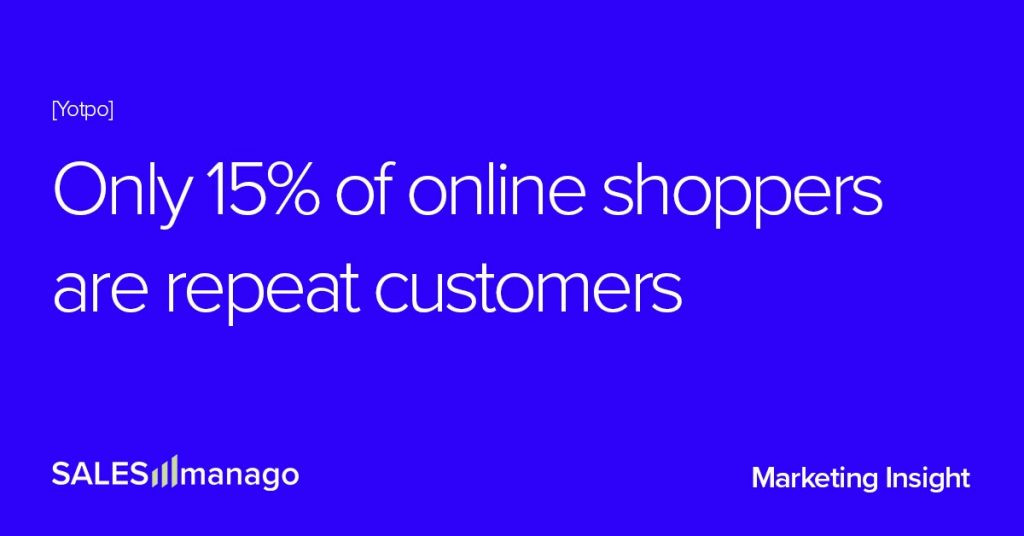
According to Harvard Business Review, acquiring a new customer is 5 to 25 times more expensive than retaining an existing one. That’s why keeping your customers close pays off not only in terms of maintaining loyal relationships but also in economic terms.
With that in mind, I guess the question you should ask yourself, is how do you keep your customers coming back?
In this article, I’ve highlighted the Top 7 reasons why your customers don’t return, even when you do your very best.
1. The product is causing dissatisfaction
As hard as it may be for you to admit, your product may just be unsatisfactory. Either it’s a service or an item that for some reason doesn’t meet your customer’s expectations. The good thing is that it is really easy to deduce what is causing the dissatisfaction by checking the reviews on various websites.
Now, if it is an issue with the quality of the product delivered, you don’t want to cut corners on it. With the enormous competition and market expansion, it is crucial to provide the highest quality when it comes to products or services, otherwise, you will face a huge churn of your customers.
Another reason might be that the product does not do what is expected of it. For example, someone buys a winter hat, and it turns out not to be as warm as it should be in the customer’s mind.
3. Disintegration with brand values
Customers inevitably have their own preferences when it comes to certain views, and now more than ever they look for brands to validate their opinions. As an example, numerous customers are switching to a more sustainable way of living, as 67% of them now identify as environmentally aware. But when the brand previously chosen by those who care about the ecosystem does something against their values, they simply switch to the one that is closer to their perceptions.
It’s obvious that not every brand can meet the needs of every customer, whether it’s political, environmental, religious, or even ideological beliefs, but listening, calculating, and analyzing the needs of your target audience is a real milestone for keeping them with you for the long term.
3. Blatant lies
Lies are bad, we all know that at least I hope we do. But there is one more very common sentence, saying: Everybody lies. Everybody, but companies should not, to maintain the trend of returning customers. Sadly, companies often abuse their customers’ trust by saying only half-truths or just dodge the facts. Need an example?
One of the clothing brands wanted to simply trick their customers by promising t-shirts of the best quality, sewn locally from high-quality materials. Fortunately, the truth will always come out and customers realized that the shirts were actually store-bought from a very popular, cheap company, using materials that are poorly sourced.
So yes, just be careful with your promises, and if you do make them, make sure you fulfill them.
4. Annoying shipping fees and slow delivery
One of the advantages of online shopping is that it uses fewer resources than traditional shopping, so it is often chosen over shopping at local stores. Although customers realize that it will take some time to deliver their purchases, they expect it to be faster rather than slower.
Buyers have a general understanding that shopping for a product online involves shipping charges and delivery time, but their patience is wearing thin. Make sure you don’t charge extra for delivery and that the shipping time is not exceeded. If there is no way to skip the extra charges, at least make sure package arrival will be on time, otherwise customers will switch to shops with cheaper and faster delivery.
Tedious return policy
While on the topic of shipping, let’s stop here and talk about returns. A customer wants to return a product they got from you, no matter the reason. When they tumble upon almost a minefield they have to cross to return the purchase and in fact, it seems much easier to just buy another one, you can be sure you’ve earned yourself a churn.
6. Customer Service is simply bad
Customers often have questions, and who better to answer them than good old-fashioned customer service? Just a quick phone call, a question, an answer, and done! Another customer is happy, and the world seems to be a bit better place.
Well, easier said than done. In fact, customers with questions sometimes spend hours on the phone trying to reach any available consultant, and when they finally hear a voice from the handset, it turns out to be an automated “no consultants available at the time, please try again later” message.
Trust me, that drives people crazy. Crazy enough to turn away from your business.
7. Ignoring the feedback
This one might as far be the absolute worse, since ignoring customers’ feedback is a clear statement that their opinion is simply irrelevant to you. The thing is, statistics clearly show that customers love the personal approach. 68% of customers expect brands to demonstrate empathy. Therefore, if you see the feedback, that something could be conducted better, take it into account and don’t ghost your customers.
Conclusion
These examples are the most common when it comes to why customers don’t return. If you consider yourself a reliable entrepreneur with a reputable company, surely you know how to handle things, to keep both, you and your company pleased. But if you want to skip some steps by ignoring customers’ opinions and engagement as well as their needs, be careful! You might end up as an example in the next list of why customers do not return.
 Follow
Follow
















